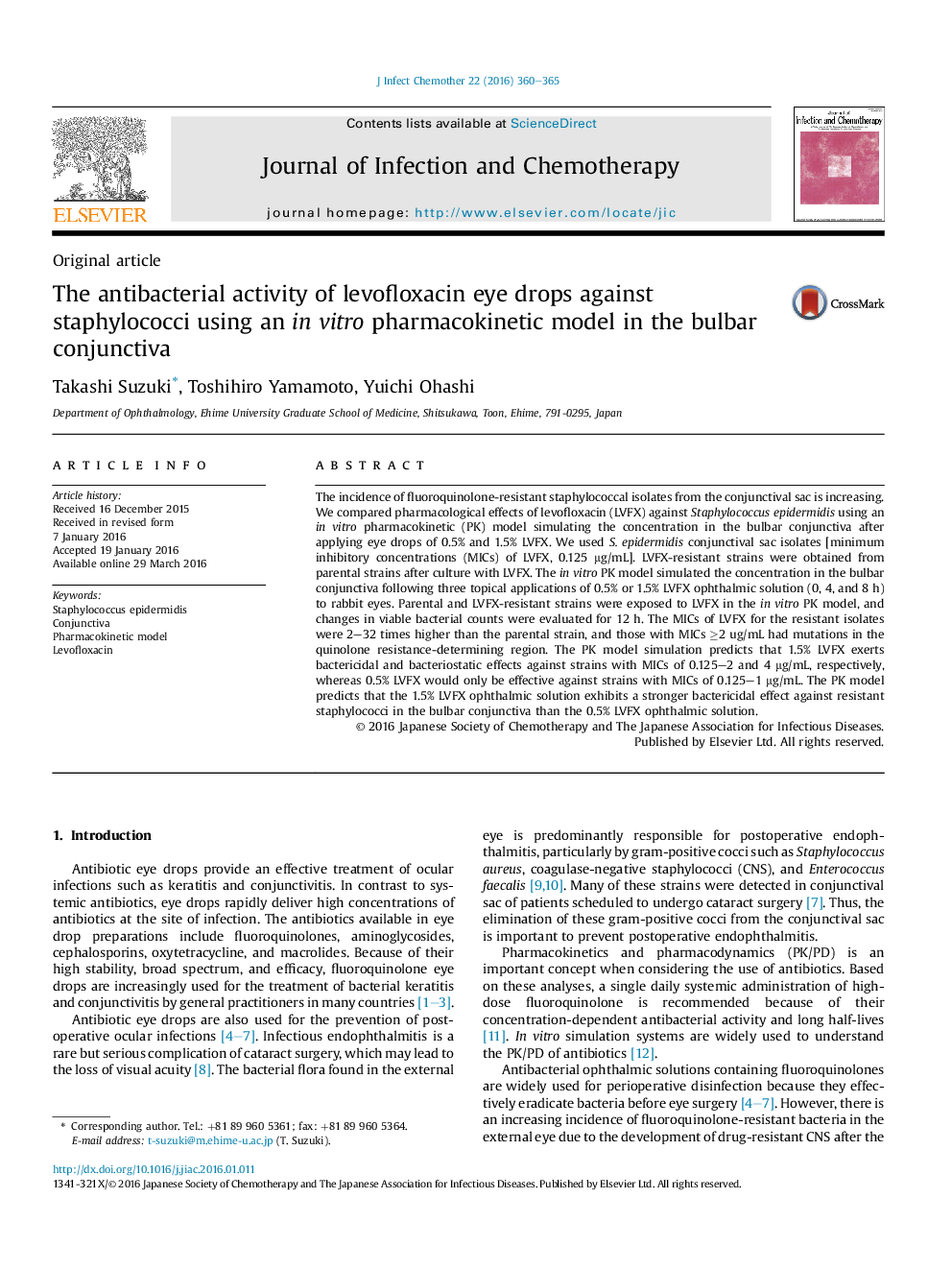| Article ID | Journal | Published Year | Pages | File Type |
|---|---|---|---|---|
| 3376621 | Journal of Infection and Chemotherapy | 2016 | 6 Pages |
The incidence of fluoroquinolone-resistant staphylococcal isolates from the conjunctival sac is increasing. We compared pharmacological effects of levofloxacin (LVFX) against Staphylococcus epidermidis using an in vitro pharmacokinetic (PK) model simulating the concentration in the bulbar conjunctiva after applying eye drops of 0.5% and 1.5% LVFX. We used S. epidermidis conjunctival sac isolates [minimum inhibitory concentrations (MICs) of LVFX, 0.125 μg/mL]. LVFX-resistant strains were obtained from parental strains after culture with LVFX. The in vitro PK model simulated the concentration in the bulbar conjunctiva following three topical applications of 0.5% or 1.5% LVFX ophthalmic solution (0, 4, and 8 h) to rabbit eyes. Parental and LVFX-resistant strains were exposed to LVFX in the in vitro PK model, and changes in viable bacterial counts were evaluated for 12 h. The MICs of LVFX for the resistant isolates were 2–32 times higher than the parental strain, and those with MICs ≥2 ug/mL had mutations in the quinolone resistance-determining region. The PK model simulation predicts that 1.5% LVFX exerts bactericidal and bacteriostatic effects against strains with MICs of 0.125–2 and 4 μg/mL, respectively, whereas 0.5% LVFX would only be effective against strains with MICs of 0.125–1 μg/mL. The PK model predicts that the 1.5% LVFX ophthalmic solution exhibits a stronger bactericidal effect against resistant staphylococci in the bulbar conjunctiva than the 0.5% LVFX ophthalmic solution.
